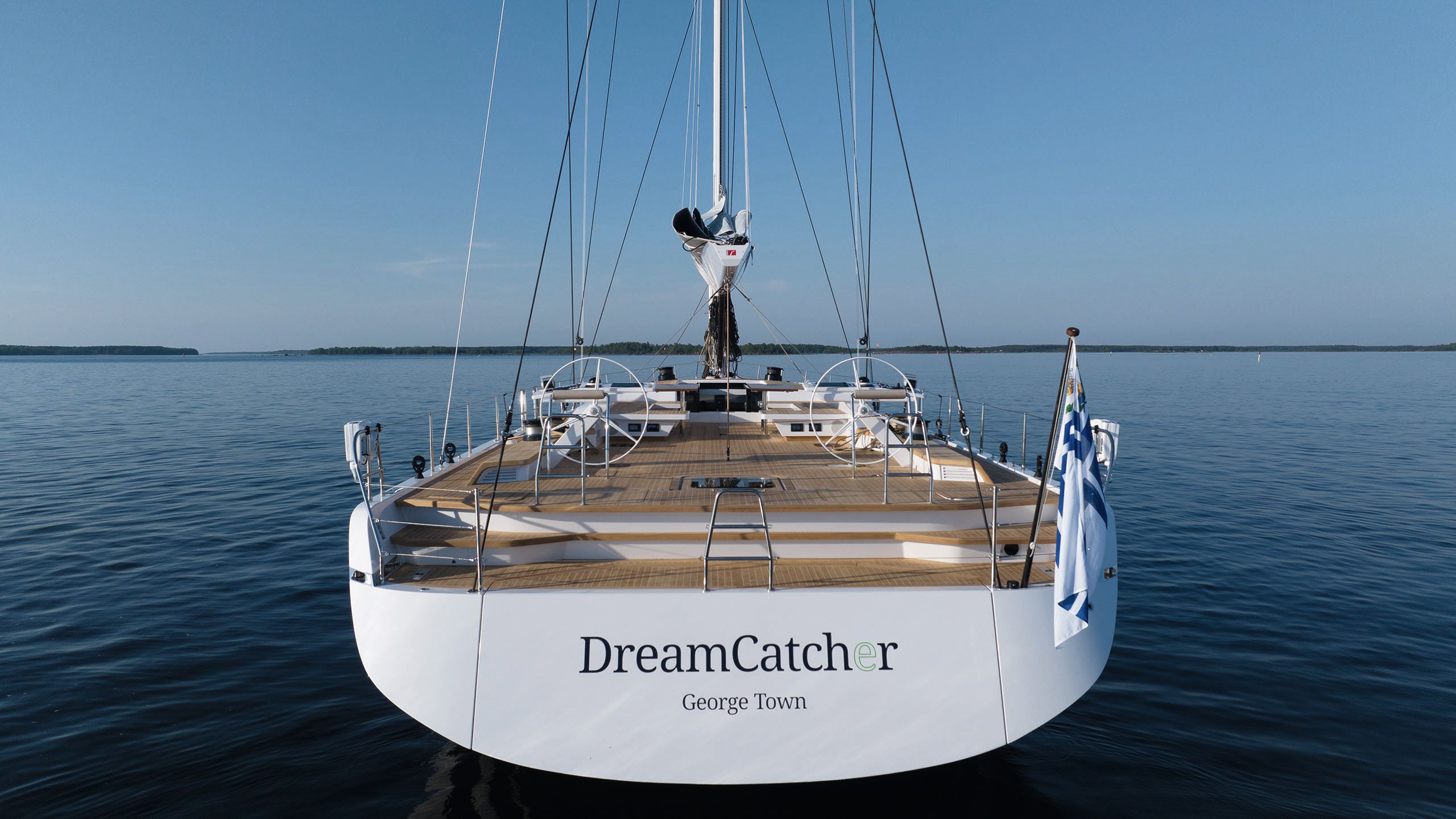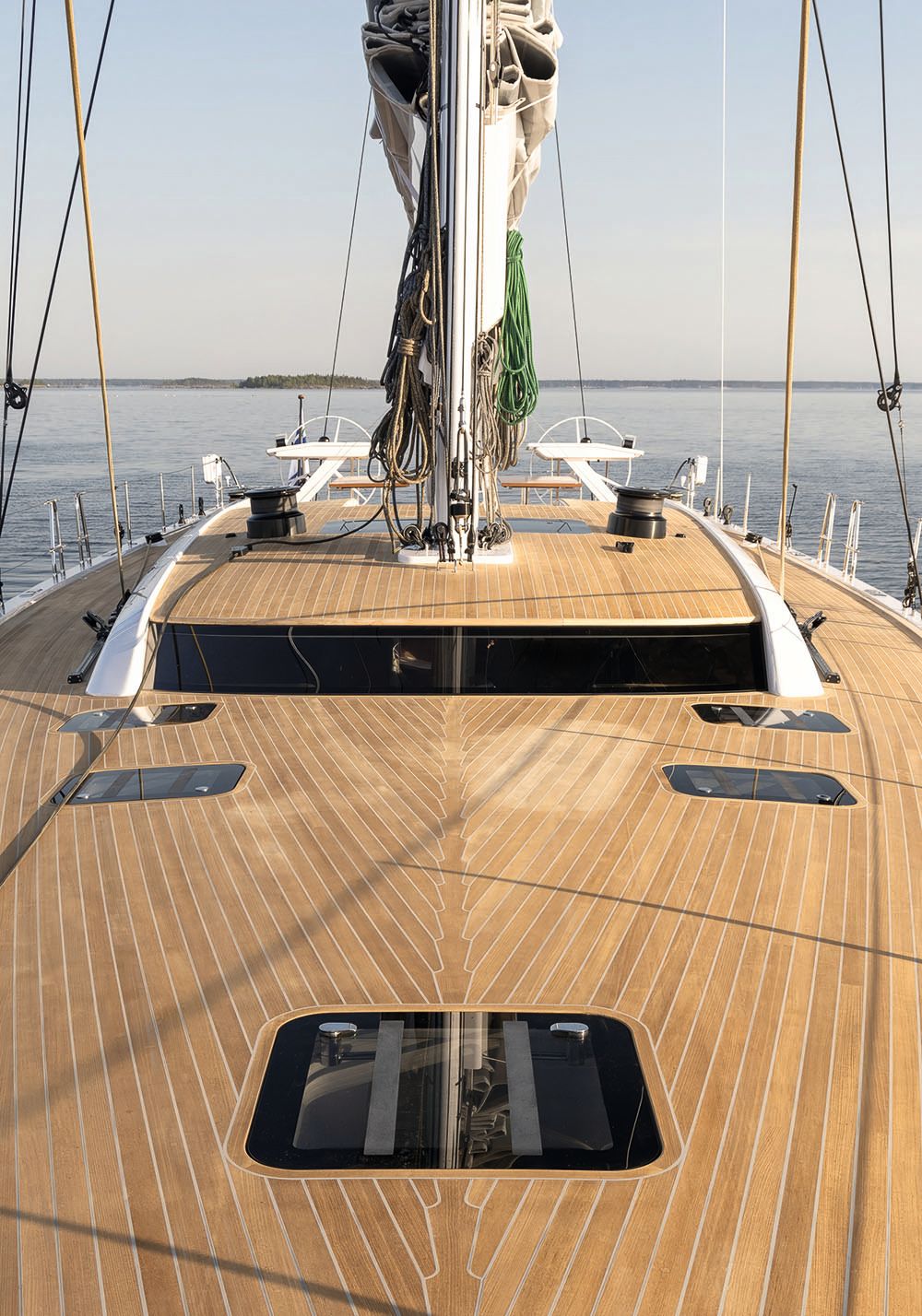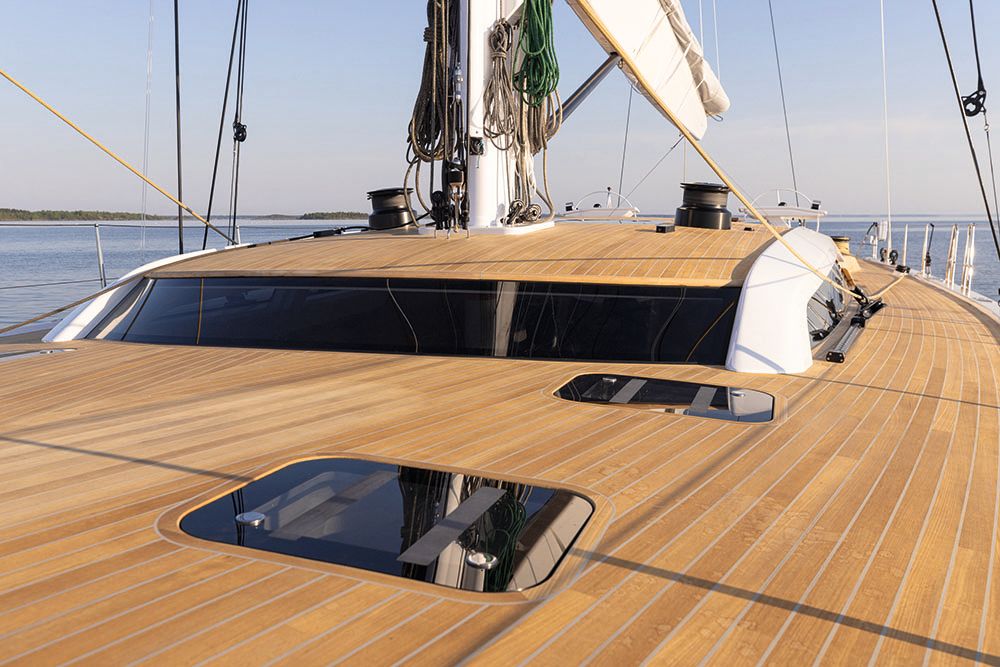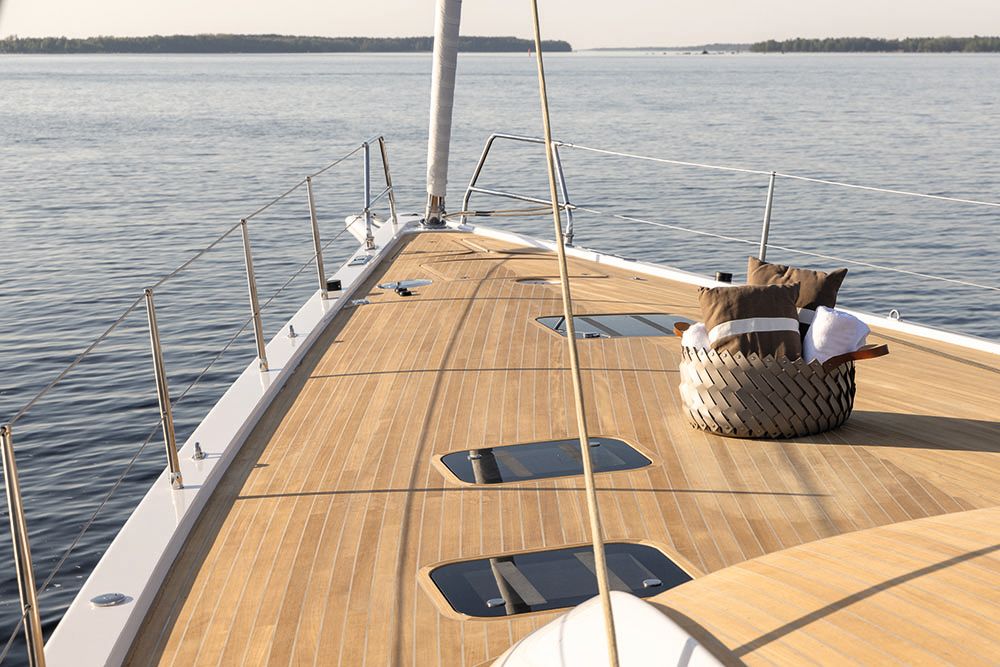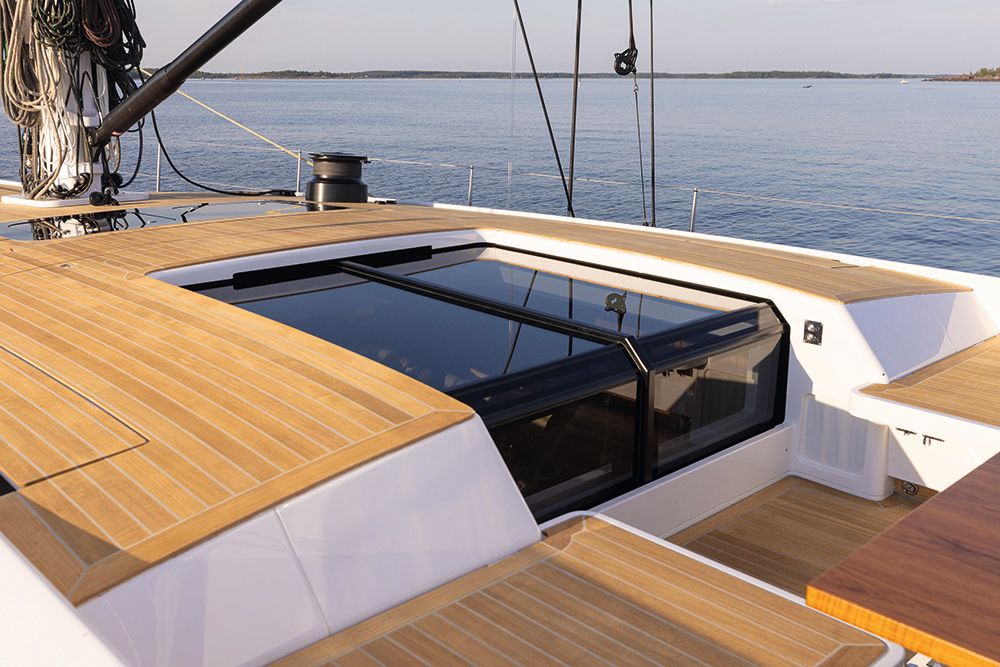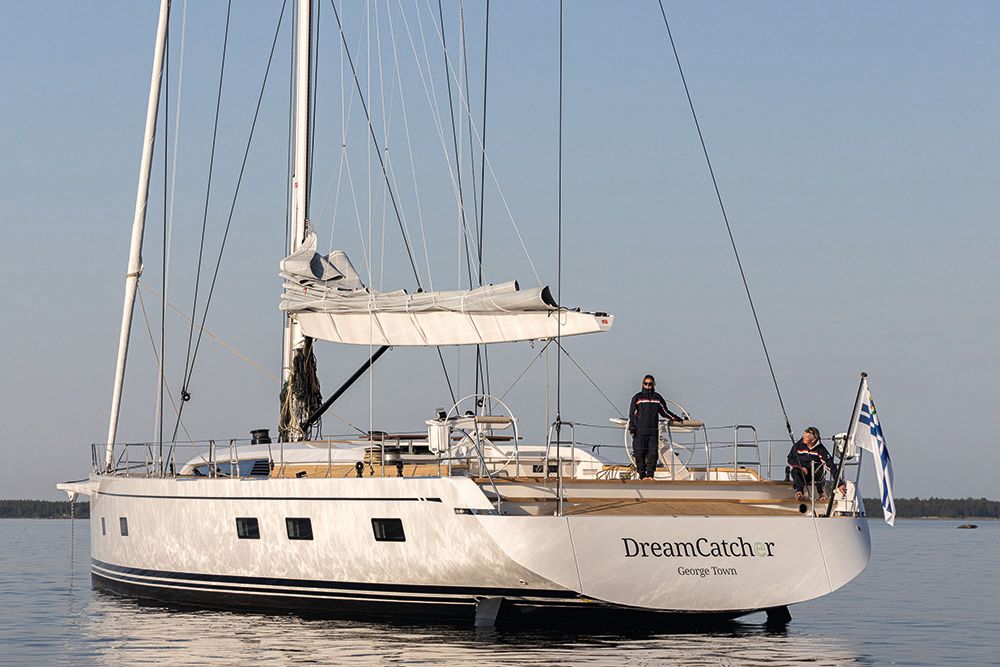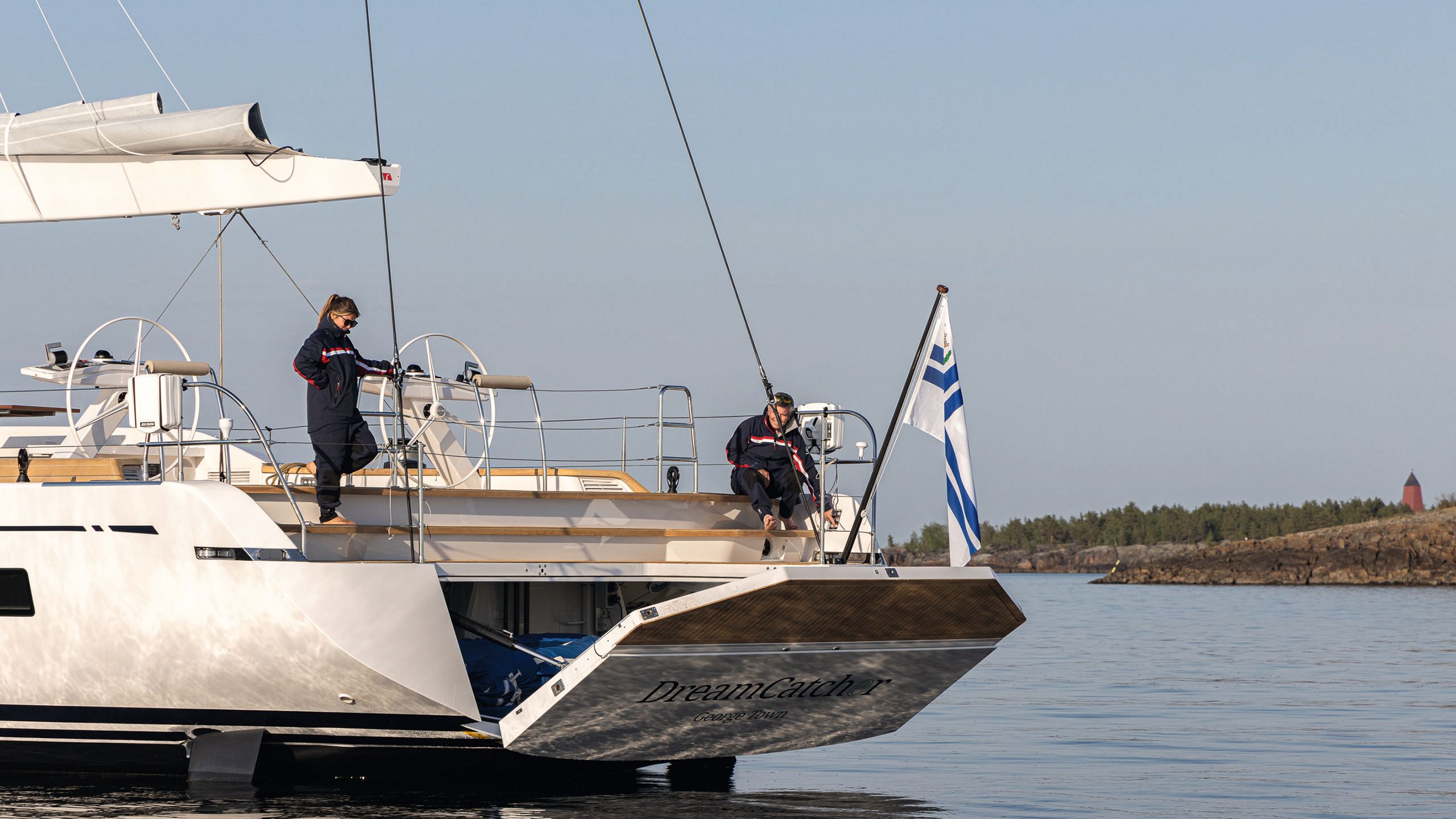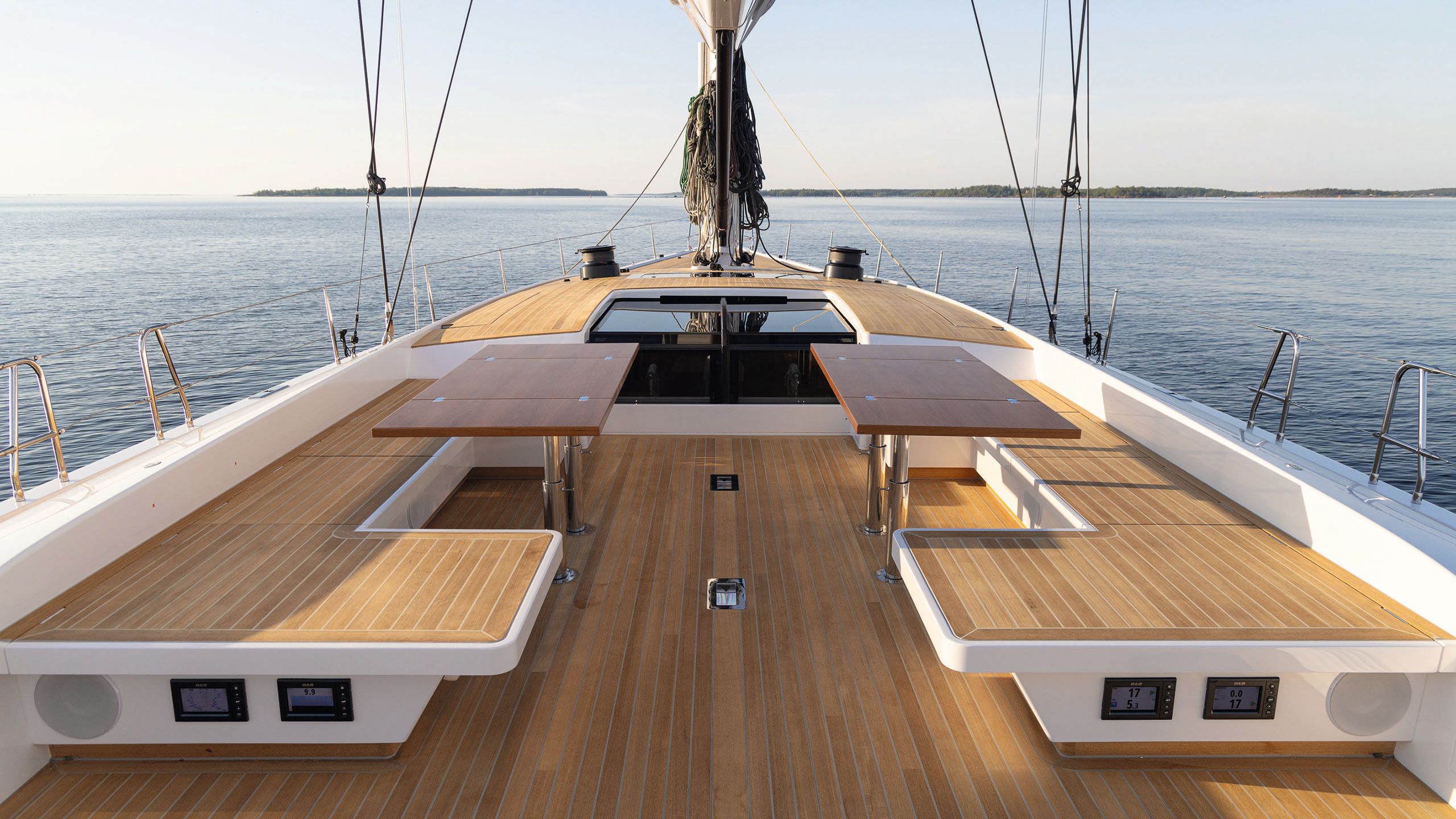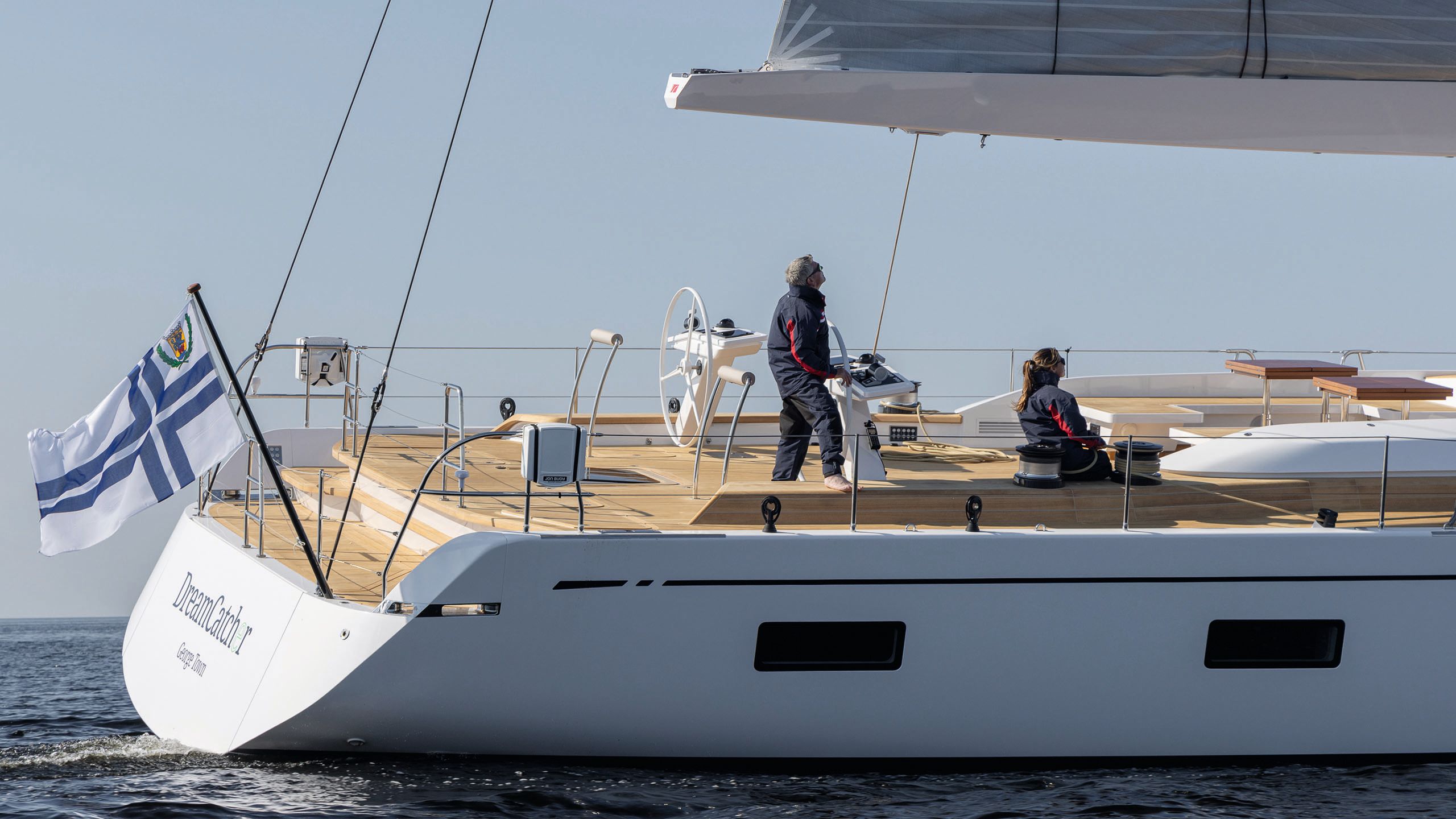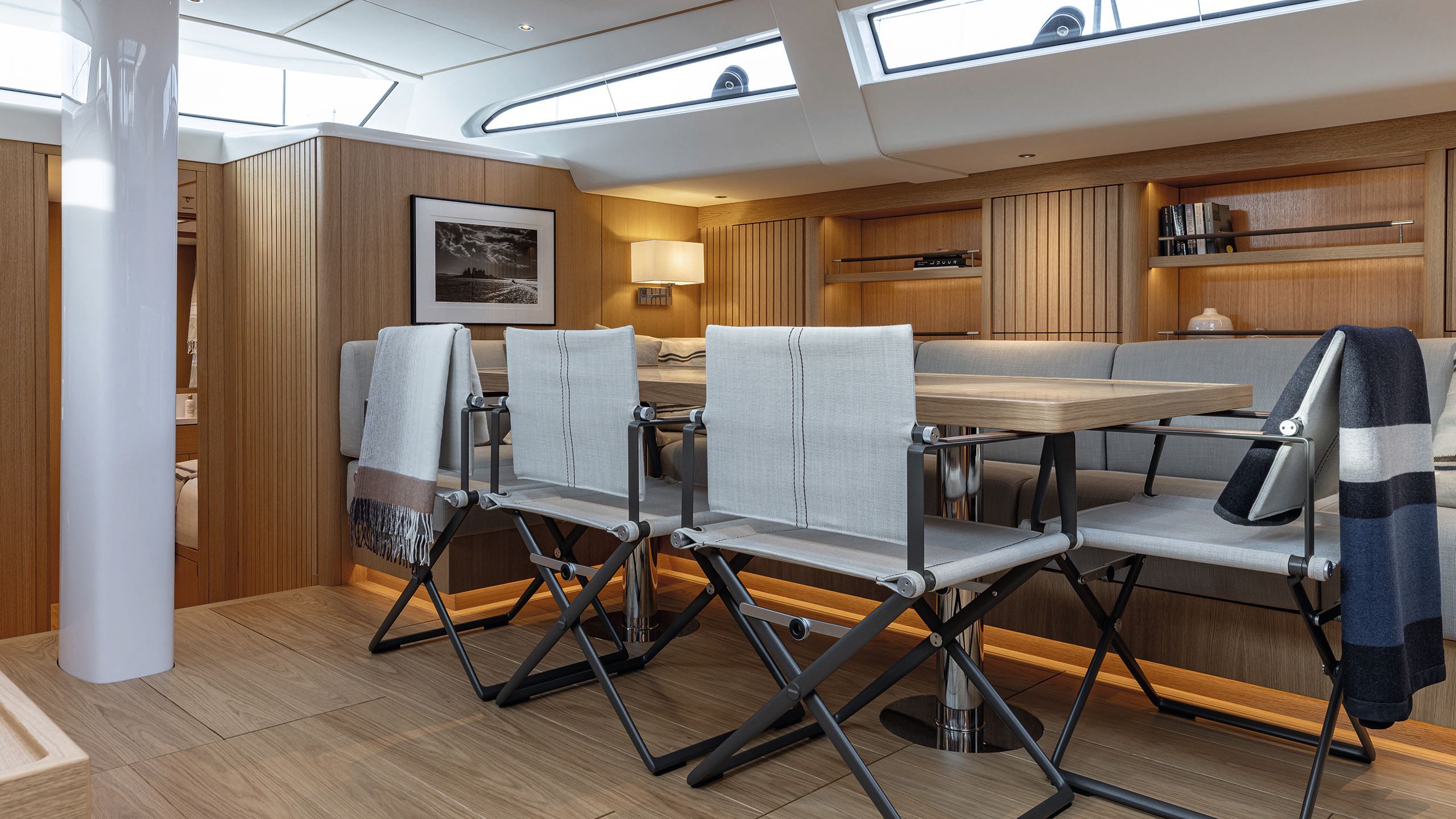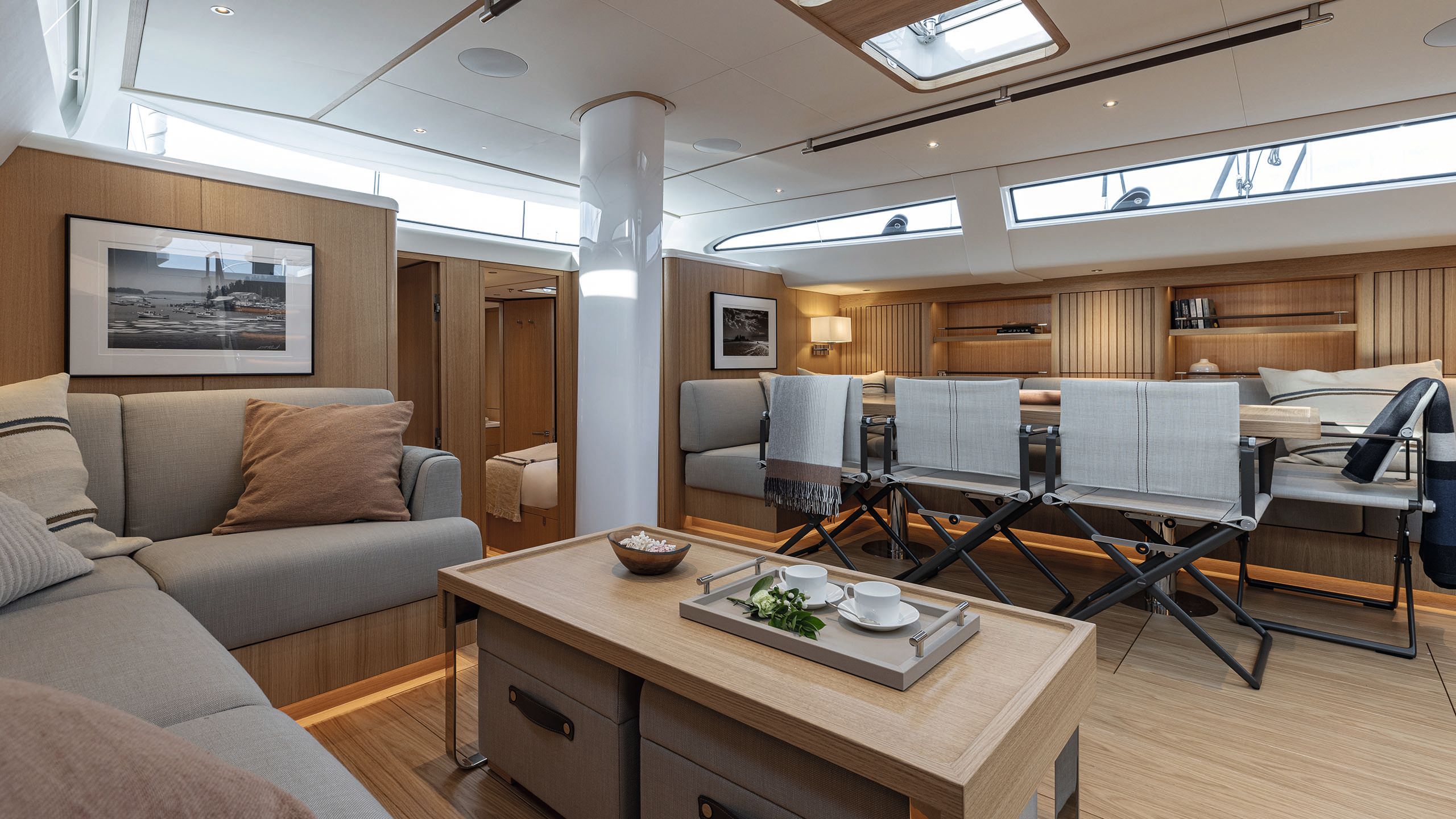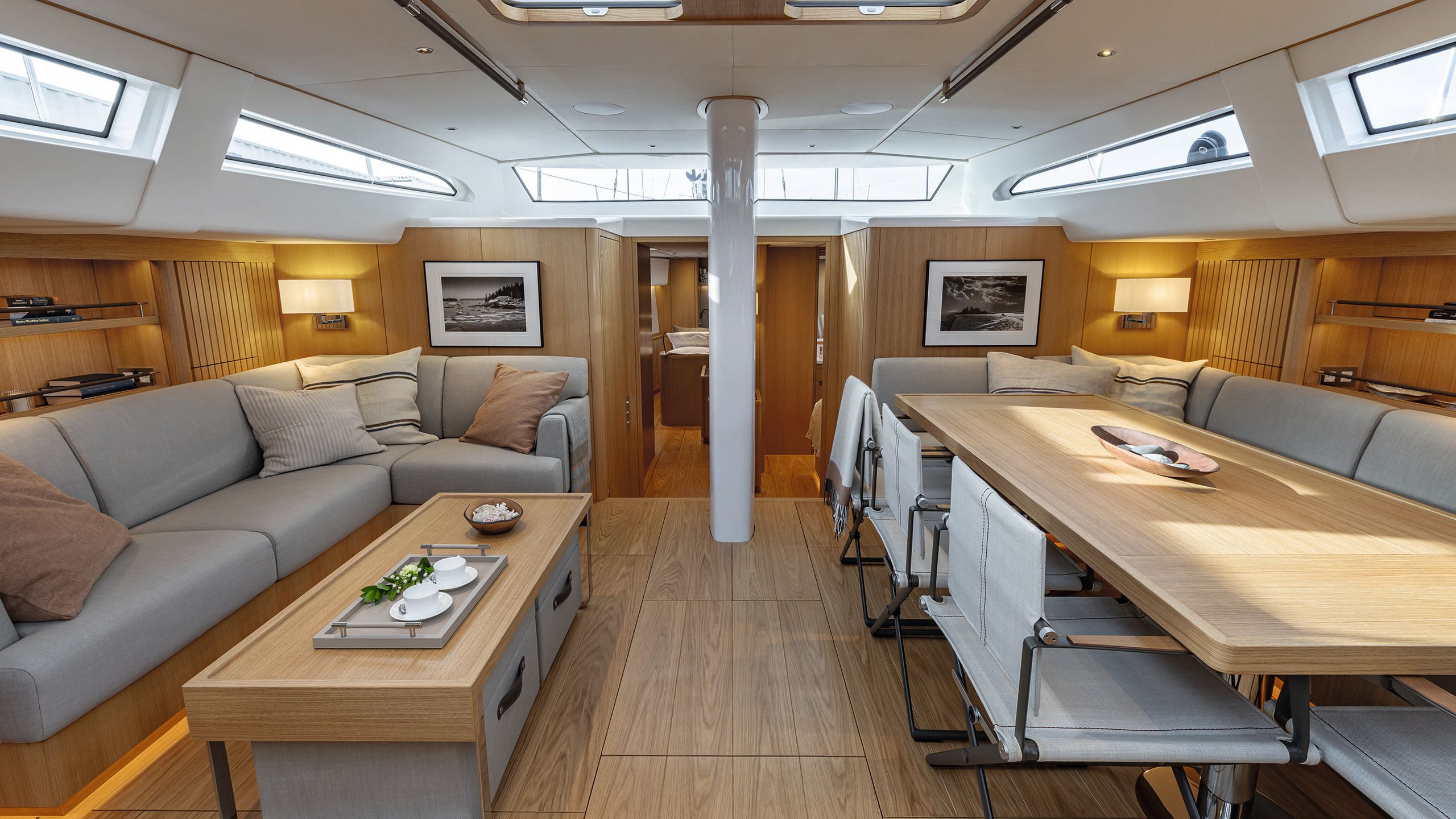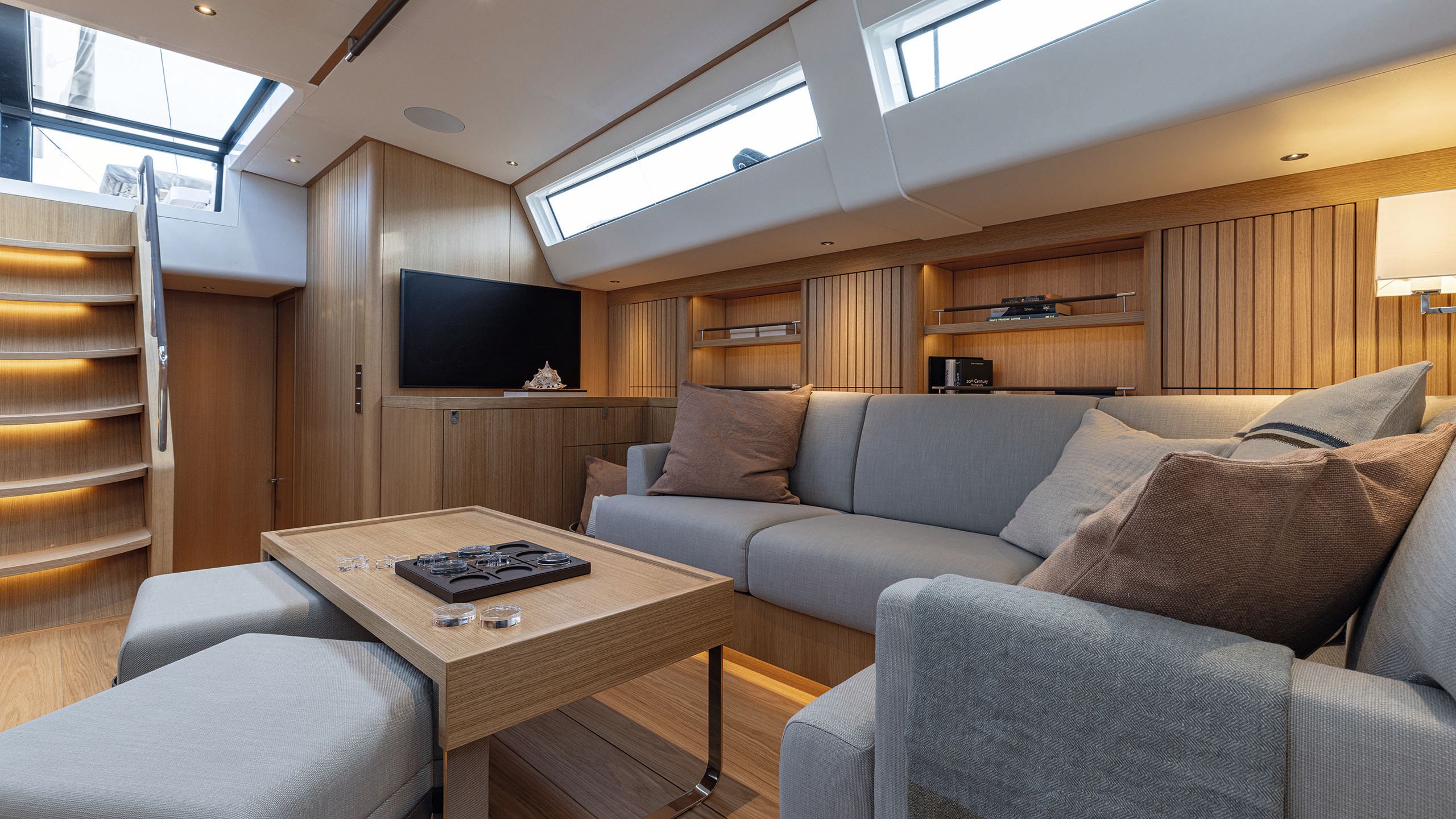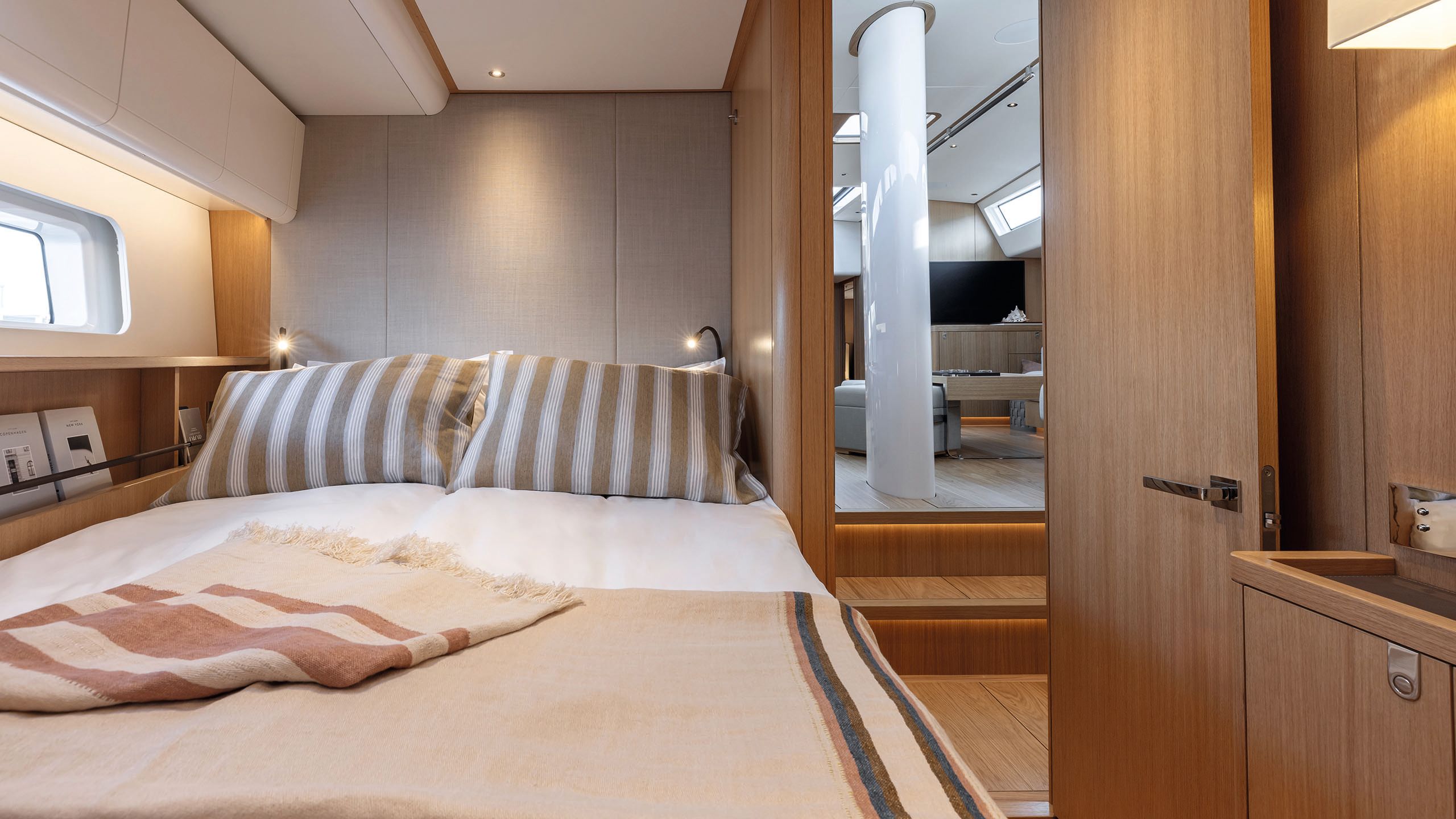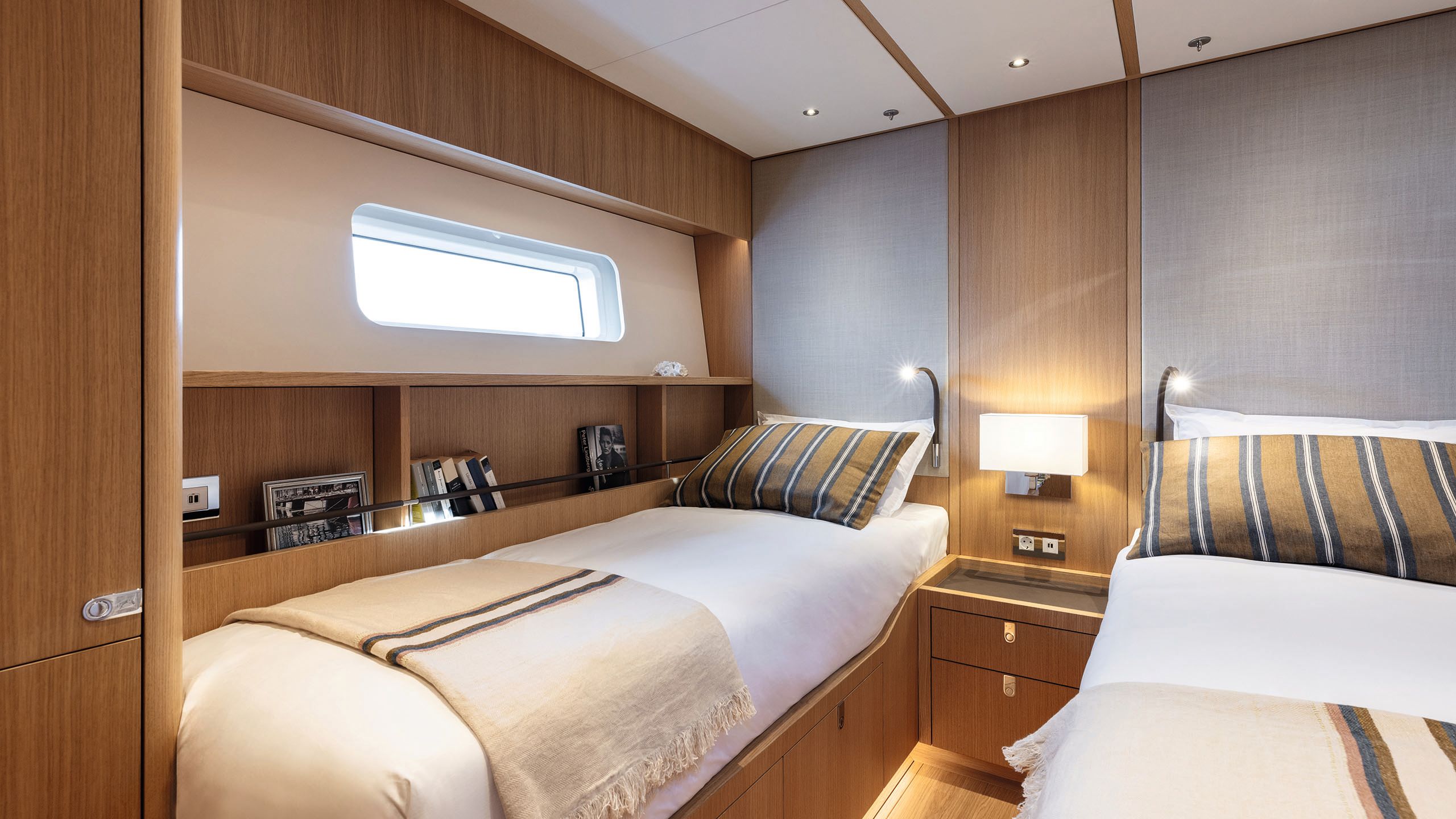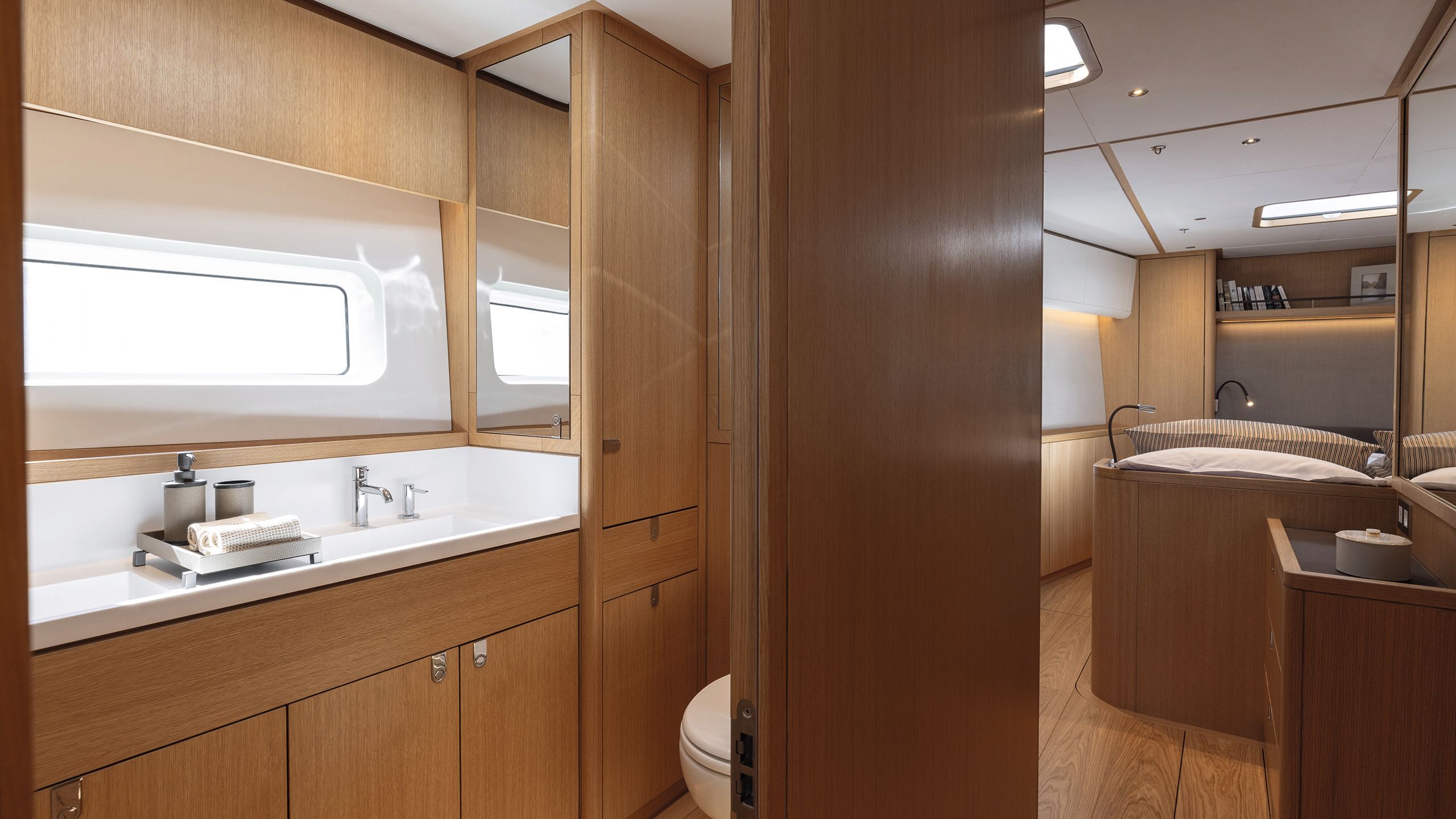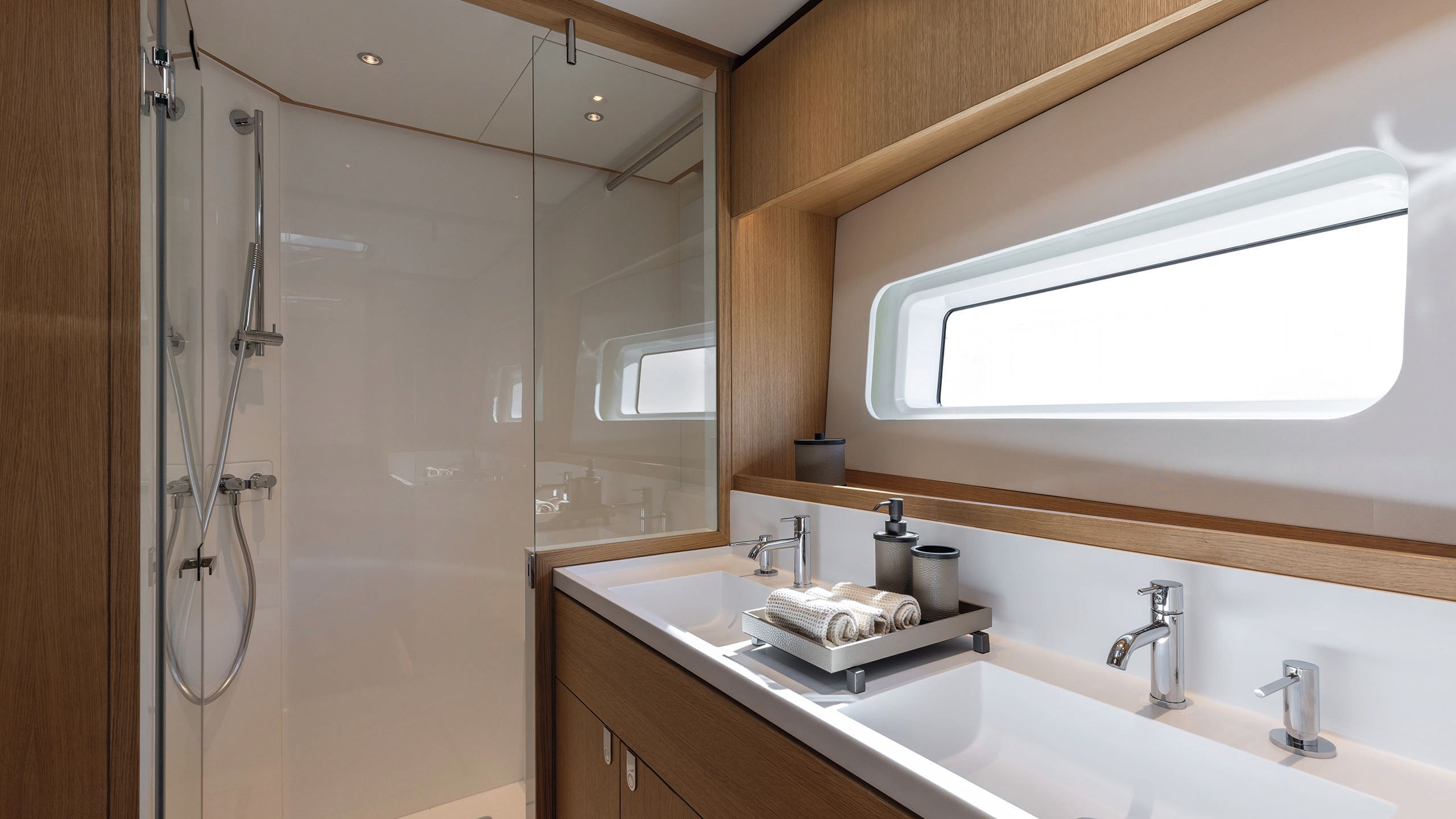SERENE
INTELLIGENCE
On board Nautor Swan's 28m hybrid yacht DreamCatcher
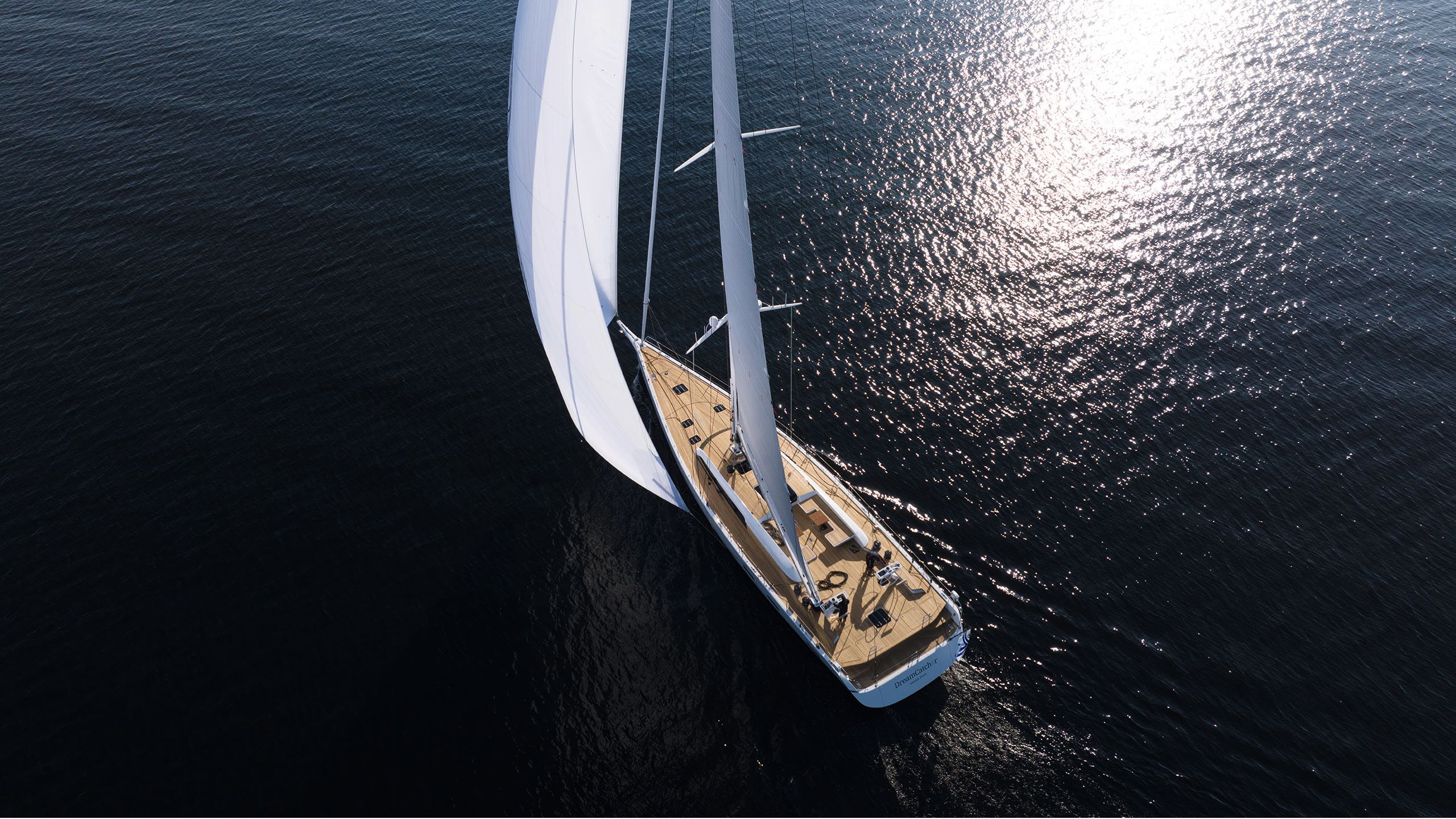
Nautor Swan’s first 88 may appear as elegant and tranquil as its gliding namesake – but there’s a lot going on under the surface. Sam Fortescue meets the Finnish builder’s first sailing yacht with hybrid propulsion
COURTESY OF NAUTOR SWAN
An agreeable waft of warm, pine-laced air helps push our gleaming new Swan 88 off the dock. Not the frivolous billowing heat of the French Riviera, but something more earnest that suggests it is a fleeting visitor to these waters. Here in Jakobstad, Finland, just a few hundred kilometres from the Arctic Circle, fine conditions are to be celebrated. It presents a conundrum for a review of a sailing yacht, however.
On one hand, Nautor Swan’s first 88, DreamCatcher, can demonstrate her comfort credentials – wide, sophisticated lounging space in an impeccably designed cockpit and saloon. On the other, she never gets to stretch her legs in the way that her pedigree suggests she can.
And that is really a shame, because after a tour of Swan’s boatbuilding facilities on Finland’s west coast, it is clear just how much painstaking forethought and precision go into the construction of every hull. From the world-class lamination expertise and vast joinery hall to a paint shop that looks like the interior of the Death Star, the Swan 88 is the product of excellence and deserves the honour of a stiff breeze.
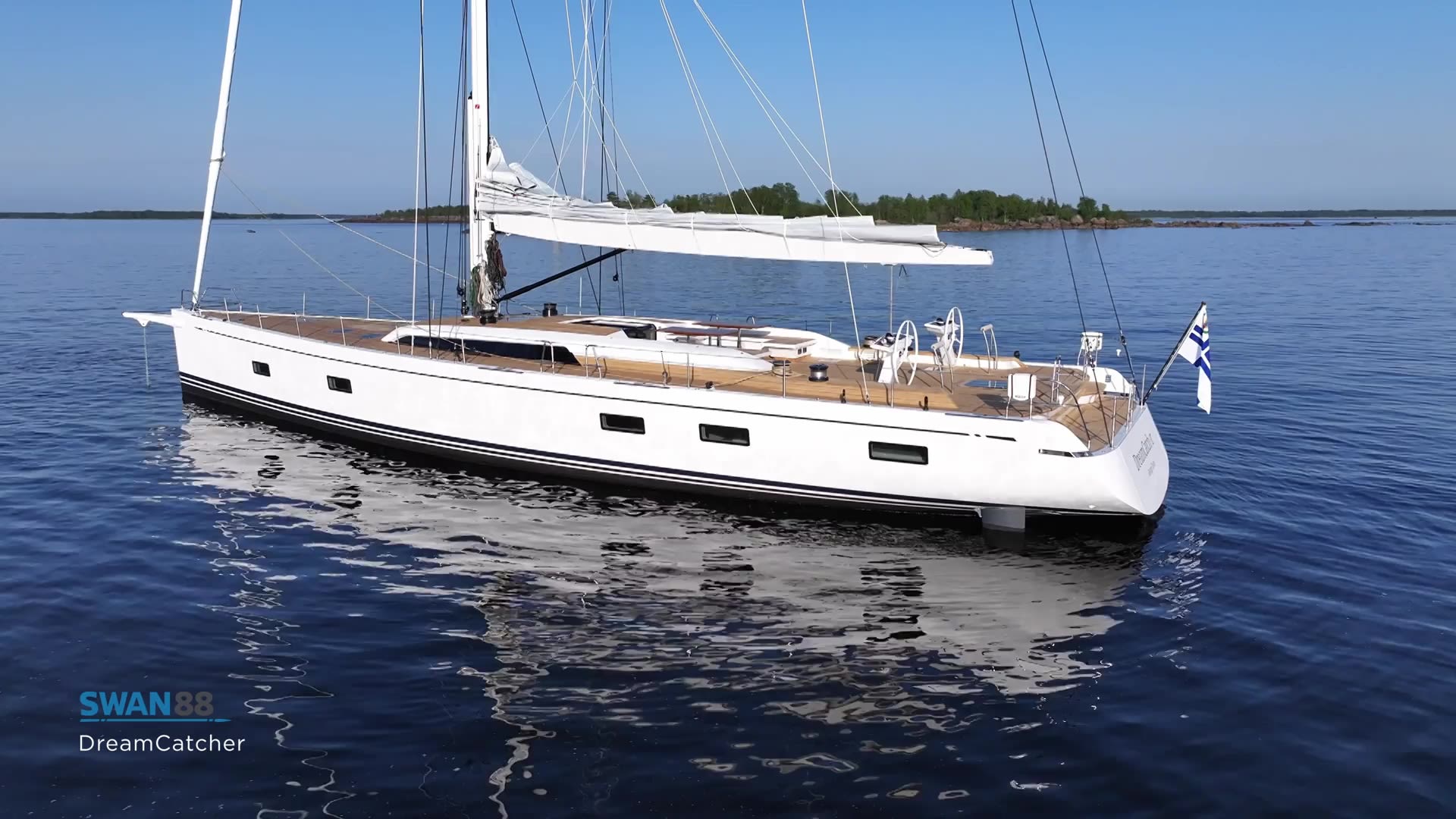
The all-carbon yacht replaces the older Swan 90, of which a dozen were built, and it reprises the brand’s tried and tested collaborations – with the inimitable Germán Frers for the naval architecture, Micheletti + Partners for the exterior and Misa Poggi on interiors. It sports Swan’s recognisably smooth, understated lines and low coachroof, with the newer configuration that positions the bowsprit a little below the level of the gunwales.
COURTESY OF NAUTOR SWAN
COURTESY OF NAUTOR SWAN
“The new model is an evolution of previous models, but for this one we have done a complete study of the balance, performance, position of the rig and shape of the sails,” says Frers. “She looks sleek in spite of two metres headroom below, and we have managed to measure her below 24 metres, so she is an 87-footer (26.5 metres hull length) that rates like a 78-footer, which is good for everyone.”
COURTESY OF NAUTOR SWANThe new 88 sports Swan’s smooth, understated lines. The low coachroof and wide side decks offer excellent sight lines from the twin helms
COURTESY OF NAUTOR SWANThe new 88 sports Swan’s smooth, understated lines. The low coachroof and wide side decks offer excellent sight lines from the twin helms
This sleight of hand is achieved with an overhang at the stern and a cleverly folding-out bathing platform that extends the aft living space. Its effect is important, because it exempts the boat from the expensive and onerous building requirements of the International Convention on Load Lines, which applies from 24 metres.
COURTESY OF NAUTOR SWAN
COURTESY OF NAUTOR SWAN
COURTESY OF NAUTOR SWAN
COURTESY OF NAUTOR SWAN
COURTESY OF NAUTOR SWAN
COURTESY OF NAUTOR SWAN
With sail and anchor lockers tucked below deck, the foredeck can be used for sunbathing
Then Swan has gone and done something quite challenging, which adds some of that cost back in, although you’d never spot it from an admiring glance dockside. It has put a hybrid propulsion system onto the boat that permits silent motoring and regeneration under sail. At a stroke, this technology slashes generator usage and lowers the average operational emissions of the boat.
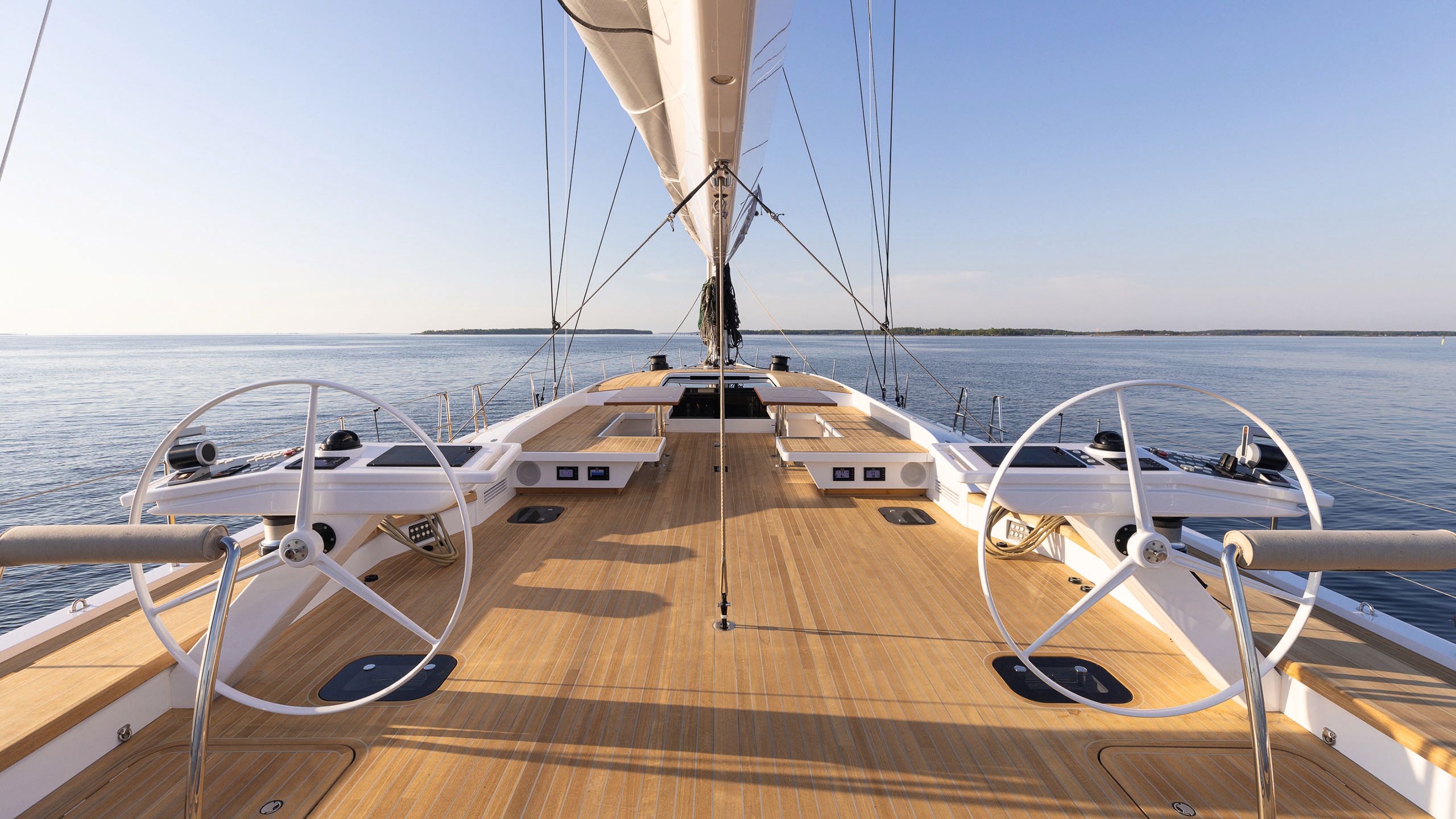
COURTESY OF NAUTOR SWAN
COURTESY OF NAUTOR SWAN
The system is compelling in its performance. A 120kW electric drive can push the boat at more than 11 knots for just over an hour. But at a more moderate 7.5-knot cruising speed, the 160kWh batteries can run for more than five hours. Two 45kW diesel generators extend the range to more than 2,000 nautical miles, and they run much more efficiently than an engine would.
“We focused on perception, creating a sense of dockside speed and lightness. To lower the deckhouse, we ‘raised’ the deck”
“We’re not talking about going to the moon,” laughs Swan CEO Giovanni Pomati, and it’s true – the technology here is well proven these days. But it has taken yards and owners time to really understand the benefits of a system that adds around £1.5 million to the cost of this boat, and some 1,500 kilograms to its displacement. Silence is the key.
At anchor, the boat can run off silent battery power for 12 hours with full air con, giving a quiet night and the chance to swim without noise or fumes. Under sail, the hydraulics run on the same high voltage as the batteries, making them very efficient to operate electrically.
COURTESY OF NAUTOR SWAN
COURTESY OF NAUTOR SWAN
COURTESY OF NAUTOR SWAN
COURTESY OF NAUTOR SWAN
COURTESY OF NAUTOR SWAN
COURTESY OF NAUTOR SWAN
The bathing platform hydraulically unfolds and then extends outwards to add more than 10 square metres of extra teak-lined deck space by the water
And under power, noise levels are 25 to 50 per cent that of a traditional diesel engine thanks to the direct electric drive (no gearbox) and the ability to position generators away from the living areas. “Captains are very excited about the low noise and the lack of vibration,” Pomati confirms.
COURTESY OF NAUTOR SWANThe cockpit’s modular benches can be arranged in a number of configurations for lounging and dining
COURTESY OF NAUTOR SWANThe cockpit’s modular benches can be arranged in a number of configurations for lounging and dining
Owners are excited too, it seems. “I use the boat for long-distance sailing in remote areas,” says DreamCatcher’s principal. “We love being on anchor and love that you barely hear the generators when you recharge the battery bank. I think the Torqeedo system is more suited for sailing boats than others. It uses large energy storage systems to provide the ability to use generators infrequently.”
Clearly not a man that quails at the thought of taking bold steps, he is clear about the attractions of the marque. “I love Swan yachts because they are very reliable and blend Italian design with Finnish quality build,” he says. “I also like that Swan is becoming a real brand.”
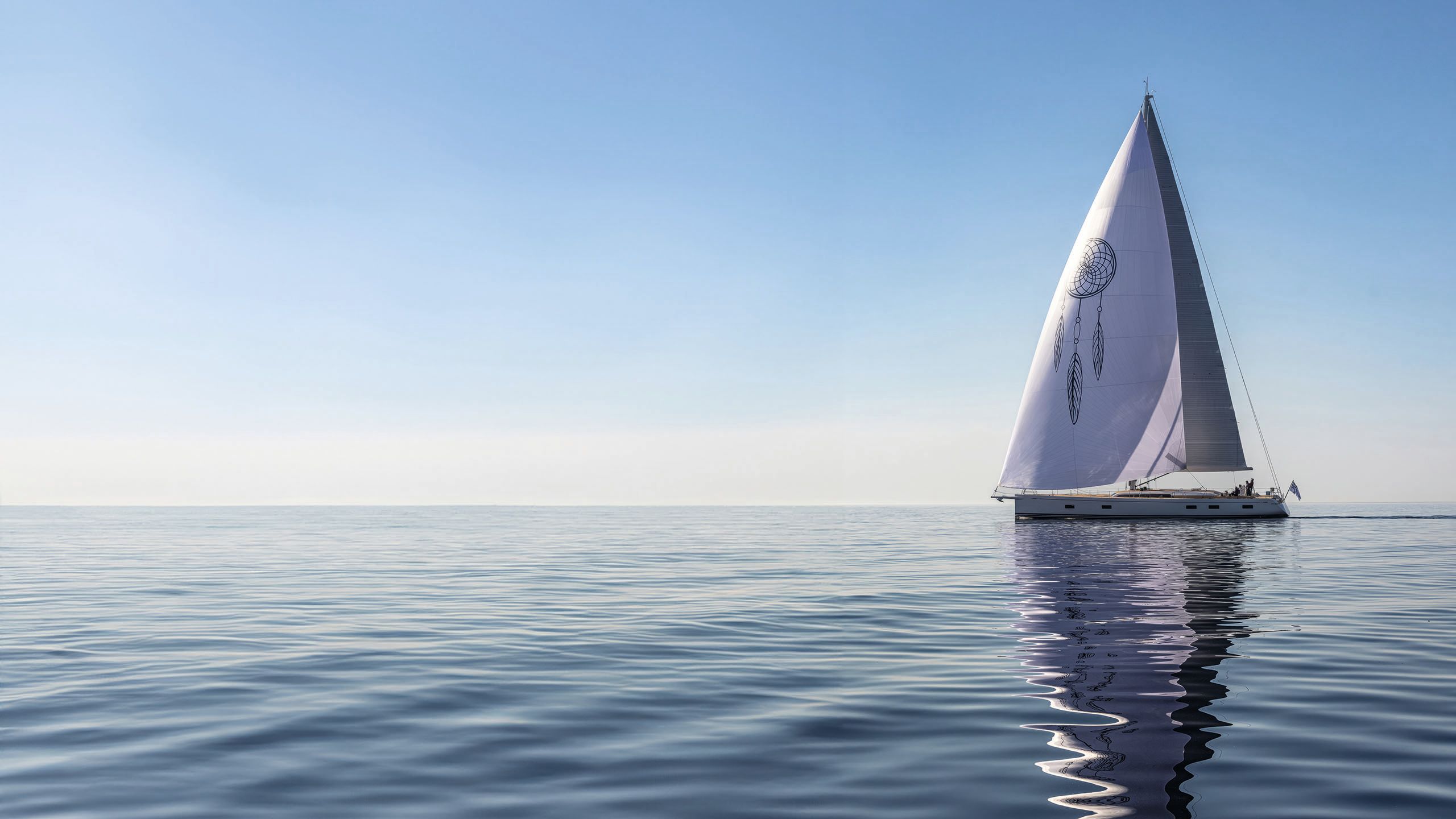
Back in pine-scented Jakobstad, there are actually two nearly finished Swan 88s waiting on the dock. As we slide out of the yard’s busy harbour on DreamCatcher, the lines of hull No 2 look identical to ours.
But she is a different beast, chasing lighter weight with titanium deck fittings and foredeck rails, carbon winches and even a carbon header board for the sail. Her rig is racier, with running backstays, deflectors and a square-top main. And she eschews the heavier hybrid system in favour of a 230-horsepower Cummins diesel workhorse.
Our boat is definitely easier to handle, with a pinhead main and running backstays tied back against the mast for racing use only. But she doesn’t seem to suffer much from it in our light-air conditions. On protected seas behind this coast’s fringe of islands, the wind varies from five to eight knots, and the boat manages to exceed this with no more than a main and 107 per cent genoa – albeit in high-tech North Sails 3Di Ocean membrane.
“From 20 knots, you go to the staysail then onto a Code sail,” says Neil Mackley of North Sails, who is aboard for the sea trial. “Optimum performance is at 22 to 23 degrees of heel, but in cruising mode that’s uncomfortable. So, the sail wardrobe is calculated for 18 degrees.
“Good design does not ask, does not show off,
does not invade; you simply feel it and live it”
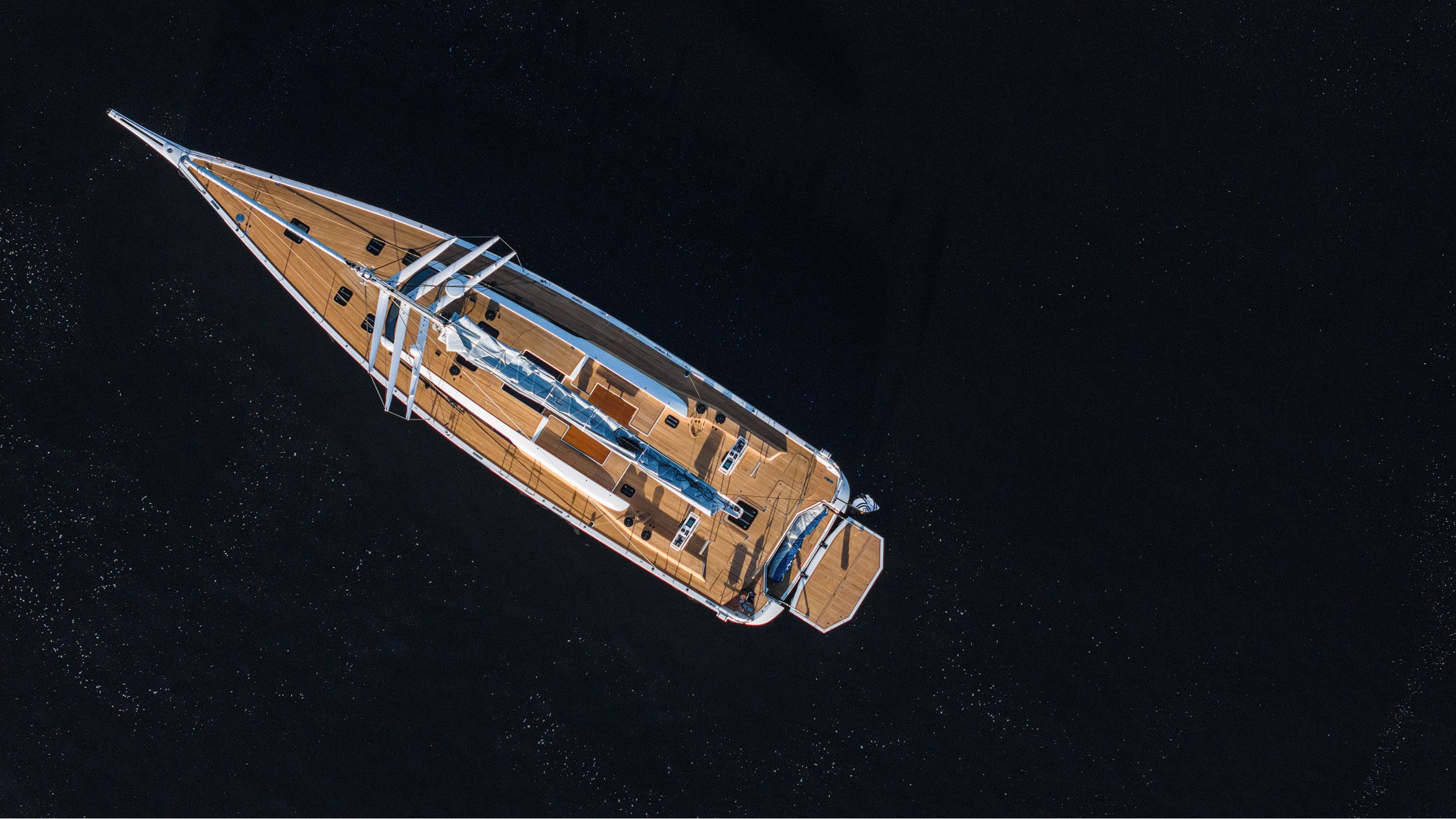
“Good design does not ask, does not show off, does not invade; you simply feel it and live it”

There are carefully designed tack points on the bow and bowsprit for downwind and reaching sails with a powered and a manual furler respectively. But though he wants to cruise remote locations, the owner plans to avoid heavy-weather sailing, so the reefs are detachable and more for delivery use.
COURTESY OF NAUTOR SWAN
COURTESY OF NAUTOR SWAN
Reefs aren’t my first thought when I finally take the wheel. With my gaze alternating between the luff of the main and the B&G instrument readout at the gorgeously cantilevered helm pedestal, I’m trying to coax every hint of speed from the boat as we beat up the channel towards the open sea.
COURTESY OF NAUTOR SWAN
COURTESY OF NAUTOR SWAN
COURTESY OF NAUTOR SWAN
COURTESY OF NAUTOR SWAN
COURTESY OF NAUTOR SWAN
COURTESY OF NAUTOR SWAN
Raised compared to the spaces fore and aft, the saloon enjoys fantastic light through the coachroof windows and skylights
The low coachroof and broad side decks provide excellent sight lines across the bow, but even sitting on the coaming here, you have a decent view. And the feel of the helm is sublime. That comes down to two factors: the gently serrated finger holds of the new-style wheel; and the direct drive steering system from JP3 that lets you know exactly what is going on under the boat.
If Germán Frers has done a good job below the waterline of the Swan 88, it is Lucio Micheletti who is responsible for the way the boat looks above it. He cut his teeth in the automotive world, before falling in love with boats and working with a string of brands including Solaris, Ice Yachts and Baltic Yachts. A man with a lyrical turn of phrase, his task was to preserve volume inside the boat without appearing to do so, and he found some clever ways to achieve this.
COURTESY OF NAUTOR SWANThere is an overwhelming sense of space when you first descend through the electric companionway hatch to the saloon
COURTESY OF NAUTOR SWANThere is an overwhelming sense of space when you first descend through the electric companionway hatch to the saloon
“In working with Swan, we focused on perception, creating a sense of dockside speed and lightness,” says Micheletti. “To lower the deckhouse, we ‘raised’ the deck, making the perception of the fibreglass part lower. The teak coaming takes on a lightness that allowed us to create a functional angle, a movement that gives an unprecedented momentum.
“I love Swan yachts because they are very reliable and blend Italian design with Finnish quality”
Another example is the bathing platform, which ticks a number of boxes. By folding down hydraulically, it can’t count towards the load line length of the boat. And yet, when its articulated design is fully extended, it creates more than 10 square metres of teak-lined decking. “Good design does not ask, does not show off, does not invade; you simply feel it and live it,” is Micheletti’s verdict.
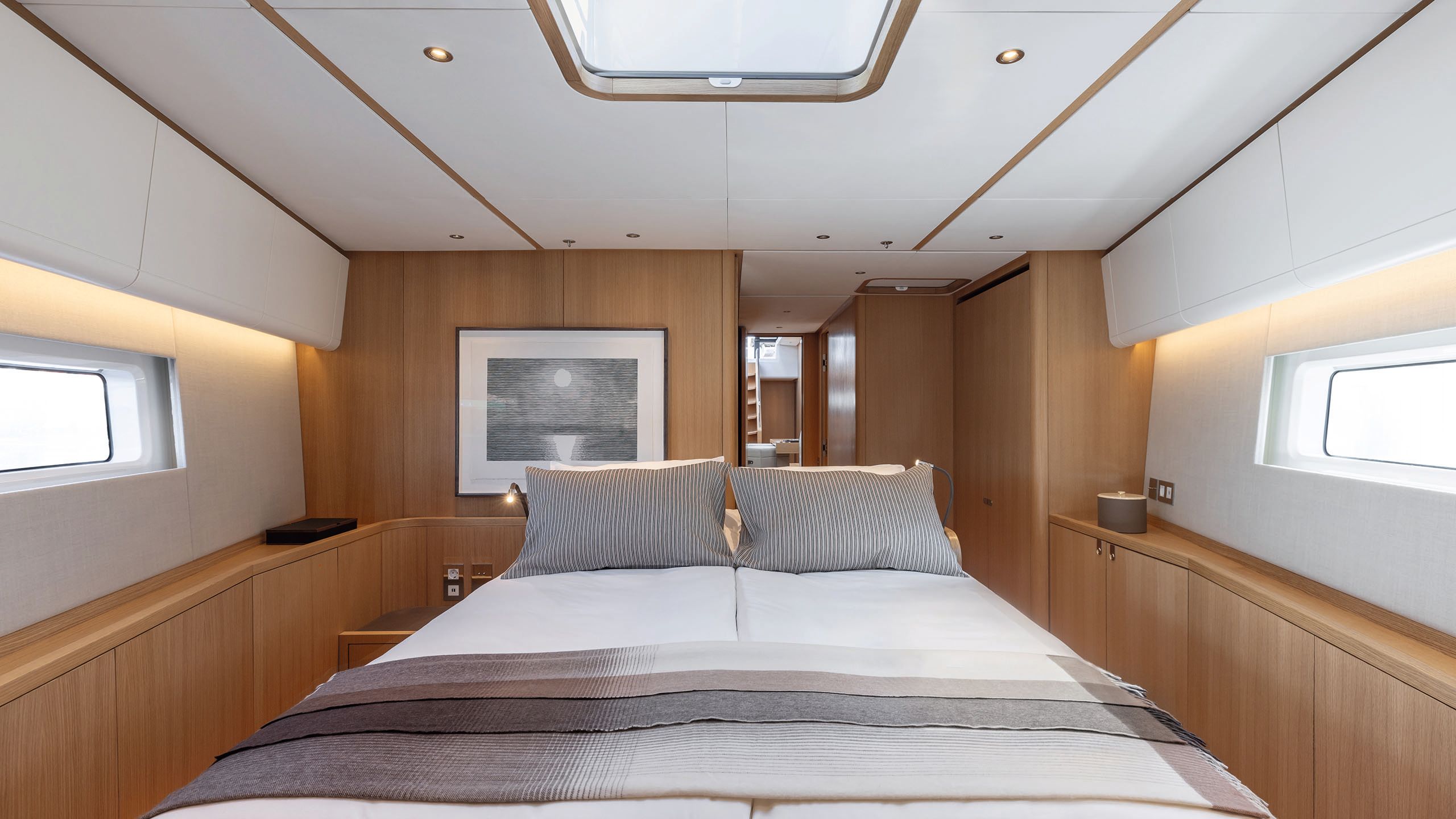
COURTESY OF NAUTOR SWANSwan also offers a “supersuite” forward – where a TV lounge is annexed to the owner’s area
COURTESY OF NAUTOR SWANSwan also offers a “supersuite” forward – where a TV lounge is annexed to the owner’s area
Appropriately for a yacht with an avowedly feminine softness to its form, interior designer Misa Poggi is responsible for the styling of the Swan 88. Best known as the creative force behind Loro Piana stores worldwide, she has curated four different moods as a starting point for owners: timeless white, traditional navy, wine Cowes and spirit of Finland.
“In my experience, I have learned that every owner is different and wants a unique boat, like a piece of art,” she tells me. “These moods sometimes serve as suggestions to help our owners experiment with materials and colours, creating a yacht that best reflects their individuality.”
COURTESY OF NAUTOR SWAN
COURTESY OF NAUTOR SWAN
The boat we sail is based on the white theme, with rich oak panelling and lighter oak floors, and a few custom details. It’s pleasing to a nautical eye to see how Poggi has worked certain functional features into her design, such as the stainless-steel eyes for the lee cloths under each berth and the leather straps for steadying you as you move about the boat.
Swan calls these yachts semi-custom, and there is space for a discussion around layout, as long as the bulkheads and technical platform remain unaltered. In reality, the main elements of choice are around the guest cabins, which can be twins or doubles. On hull No 1, the owner has opted to put a fourth cabin forward of the main saloon, but you could equally turn this into a study or television room if you wanted.
COURTESY OF NAUTOR SWAN
COURTESY OF NAUTOR SWAN
COURTESY OF NAUTOR SWAN
COURTESY OF NAUTOR SWAN
COURTESY OF NAUTOR SWAN
COURTESY OF NAUTOR SWAN
The owner’s cabin is at the bow with its en suite just aft (centre and right)
The aft quarter of the boat is devoted to crew accommodation, navigation and service, which makes a lot of sense. The three- or four-person crew have their own companionway aft, which emerges on deck by the helm stations – well clear of the guest cockpit. The galley lies in the crew area, separated from the saloon by a door when necessary, and is exceedingly well-equipped with Miele appliances.
“I have learned that every owner is different and wants a unique boat, like a piece of art”
Having tacked out towards the sea for a couple of hours, it is eventually time to head home under power. Most sailors will be accustomed to that moment of disappointment when the blissful calm of the sail is shattered by the cough and wheeze of the diesel engine.
Even on a boat as meticulously engineered as a Swan, there’s no escaping the increase in noise and vibration. But with a hybrid, that moment never comes. The sails quickly furled, our skipper puts the throttle down and we surge silently forward – racing for home under electric power at nine knots. What a revelation.
First published in the December 2024 issue of BOAT International. Get this magazine sent straight to your door, or subscribe and never miss an issue.
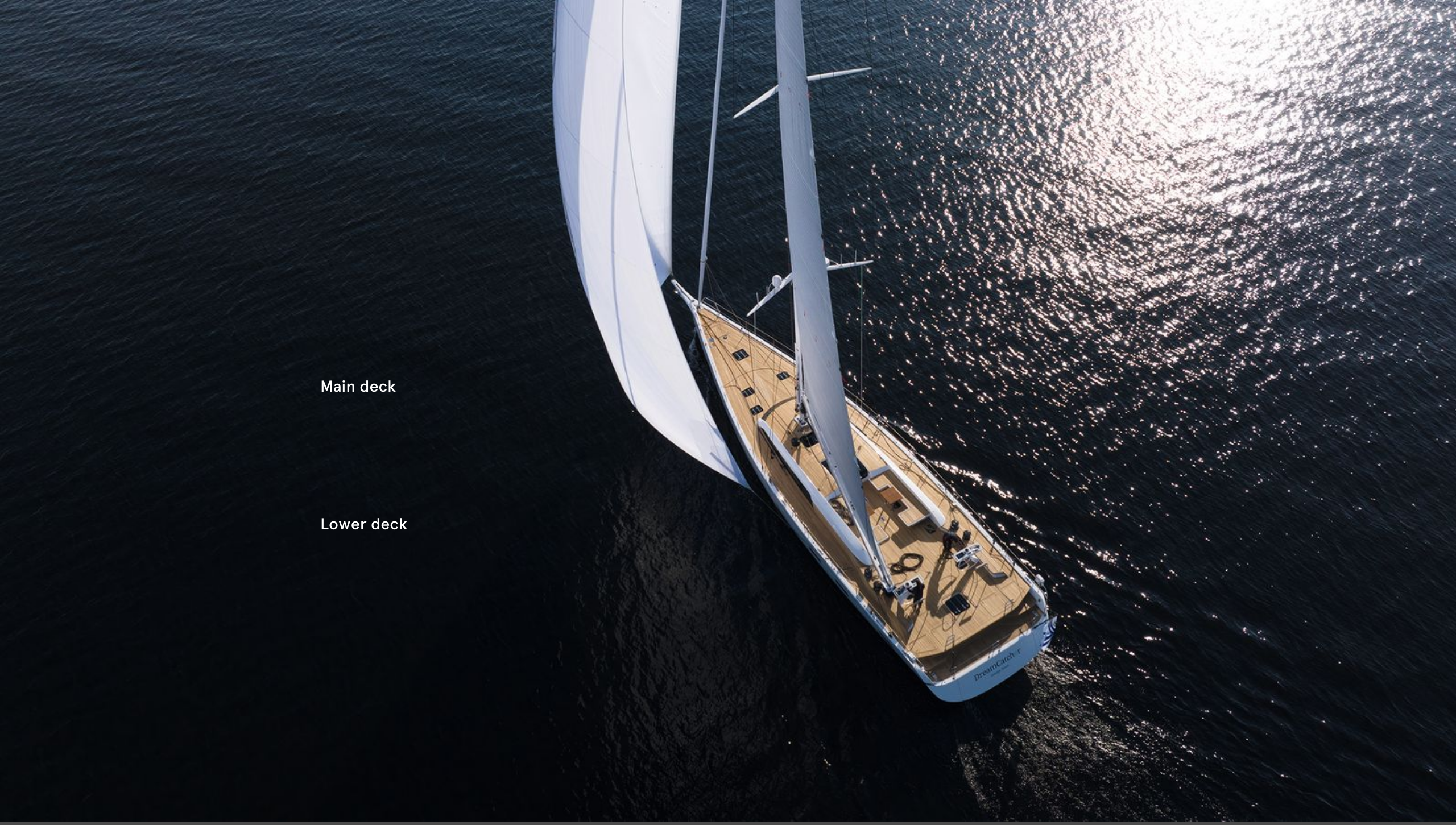
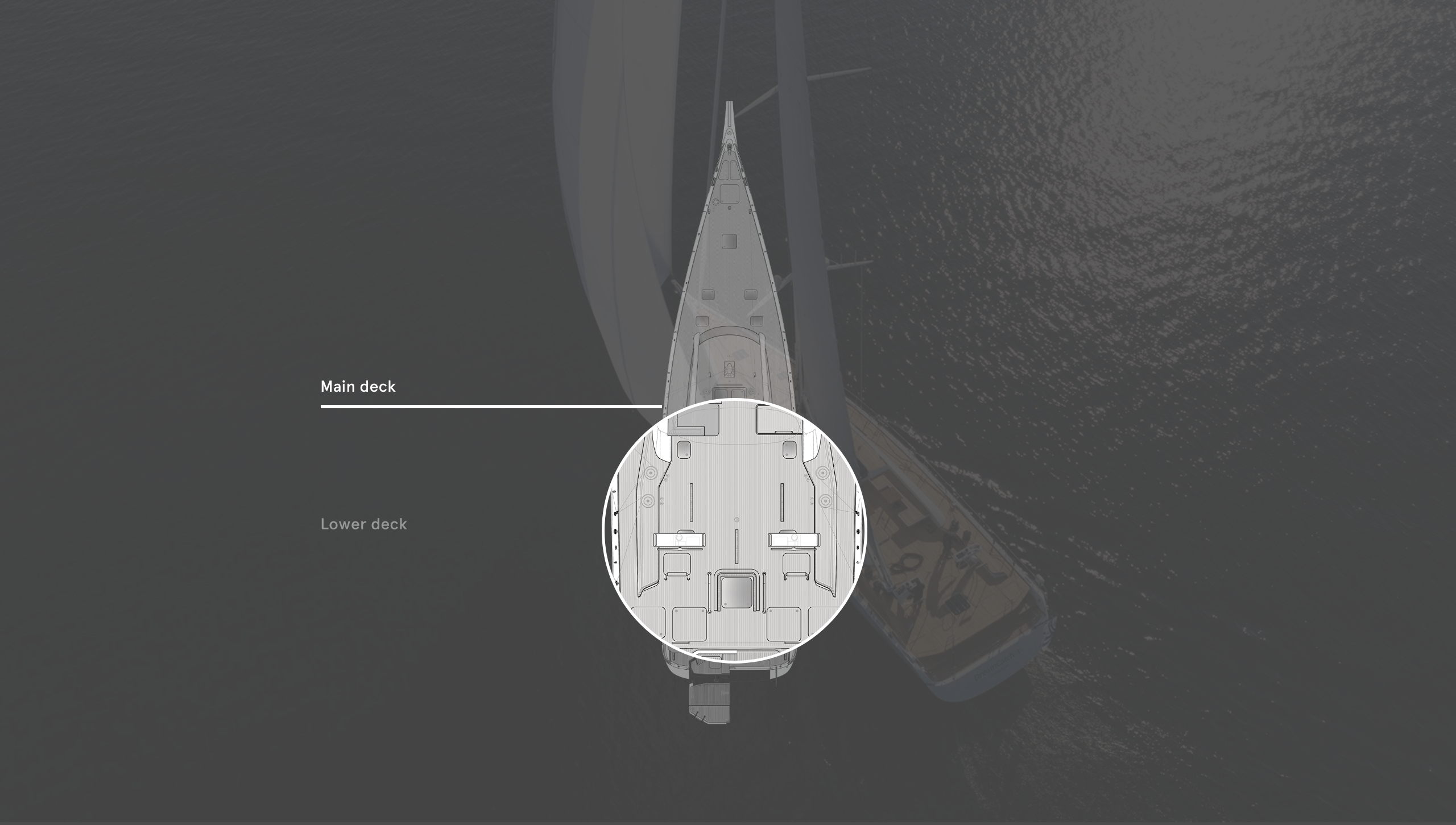
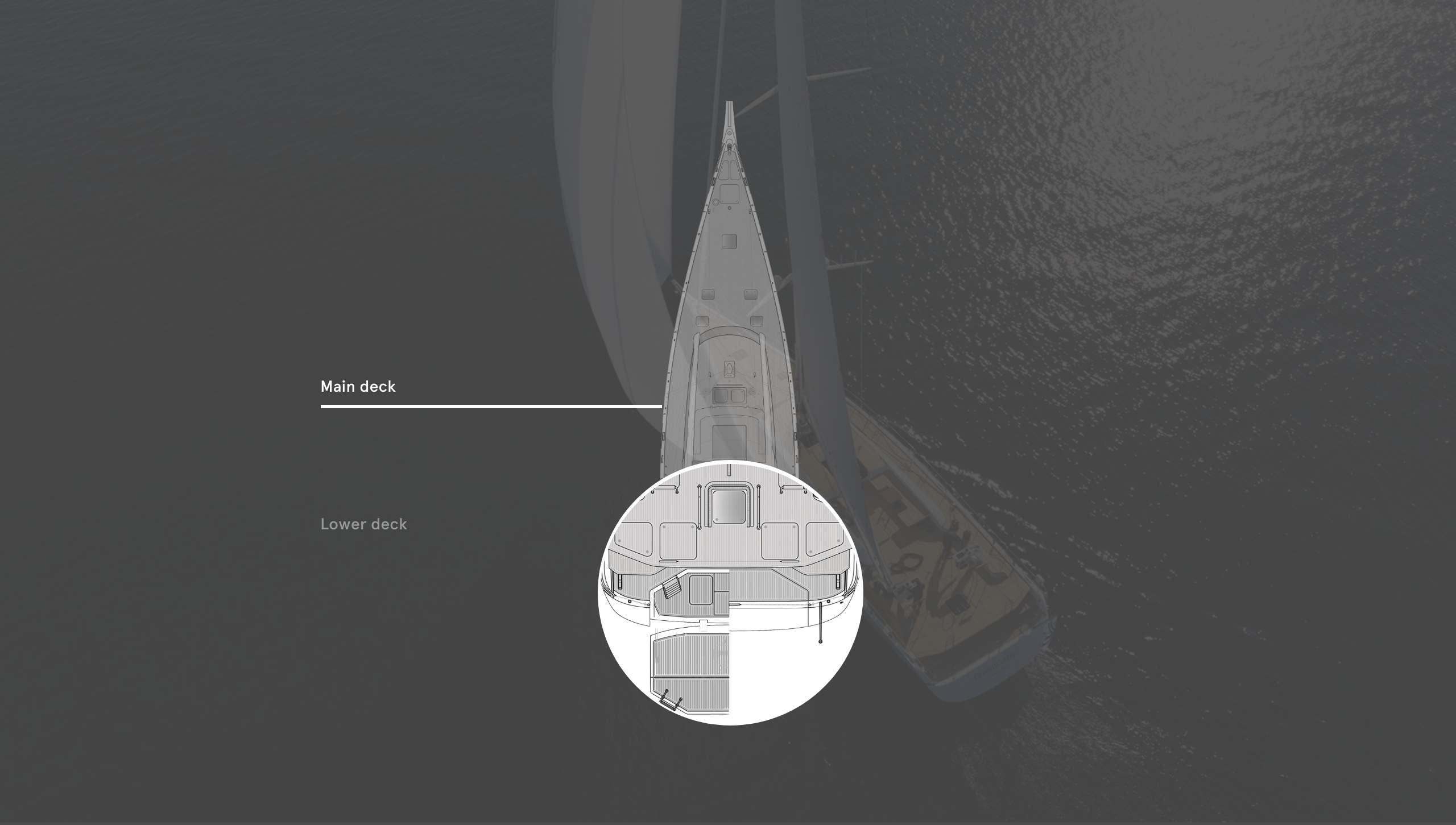
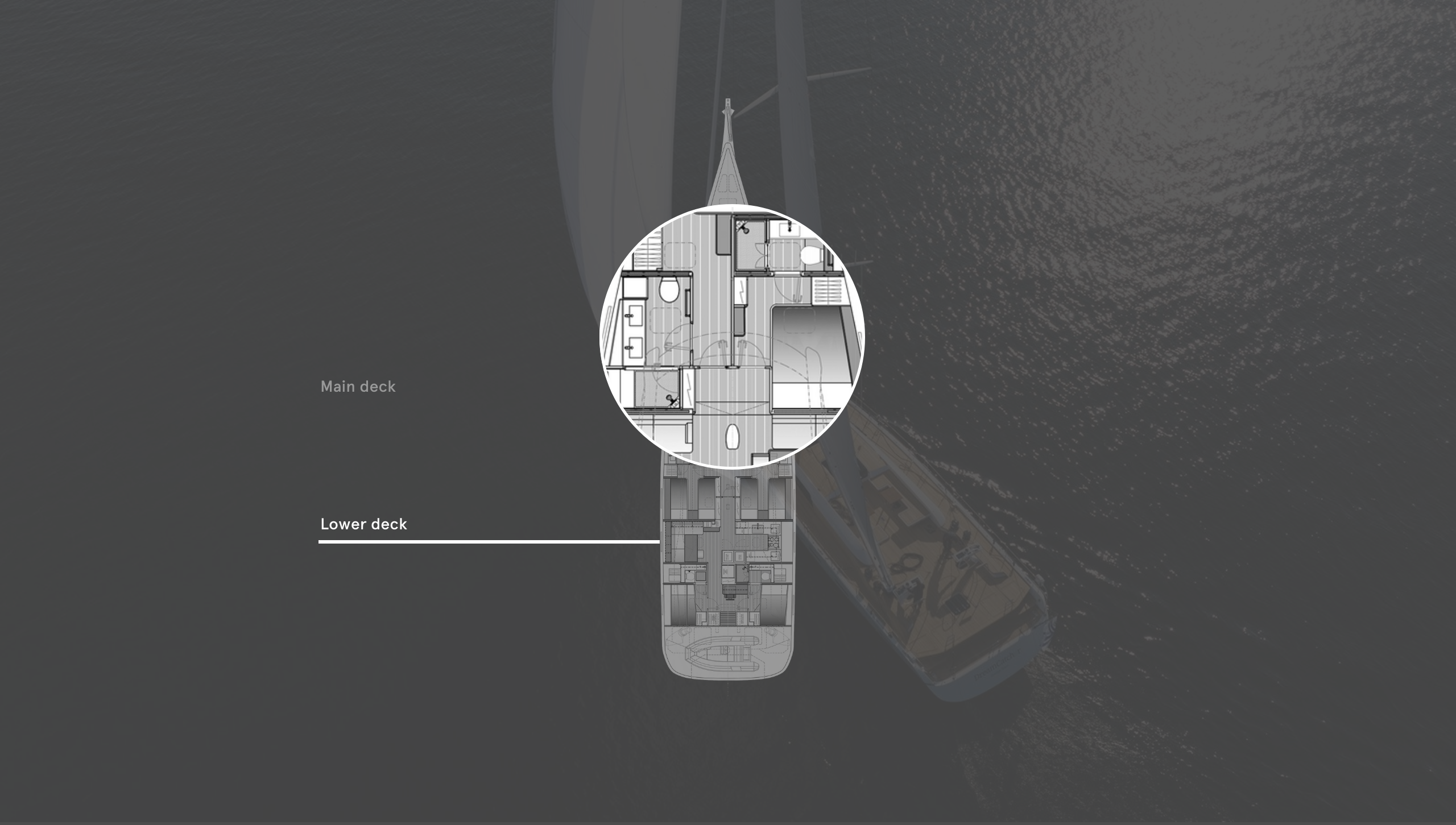
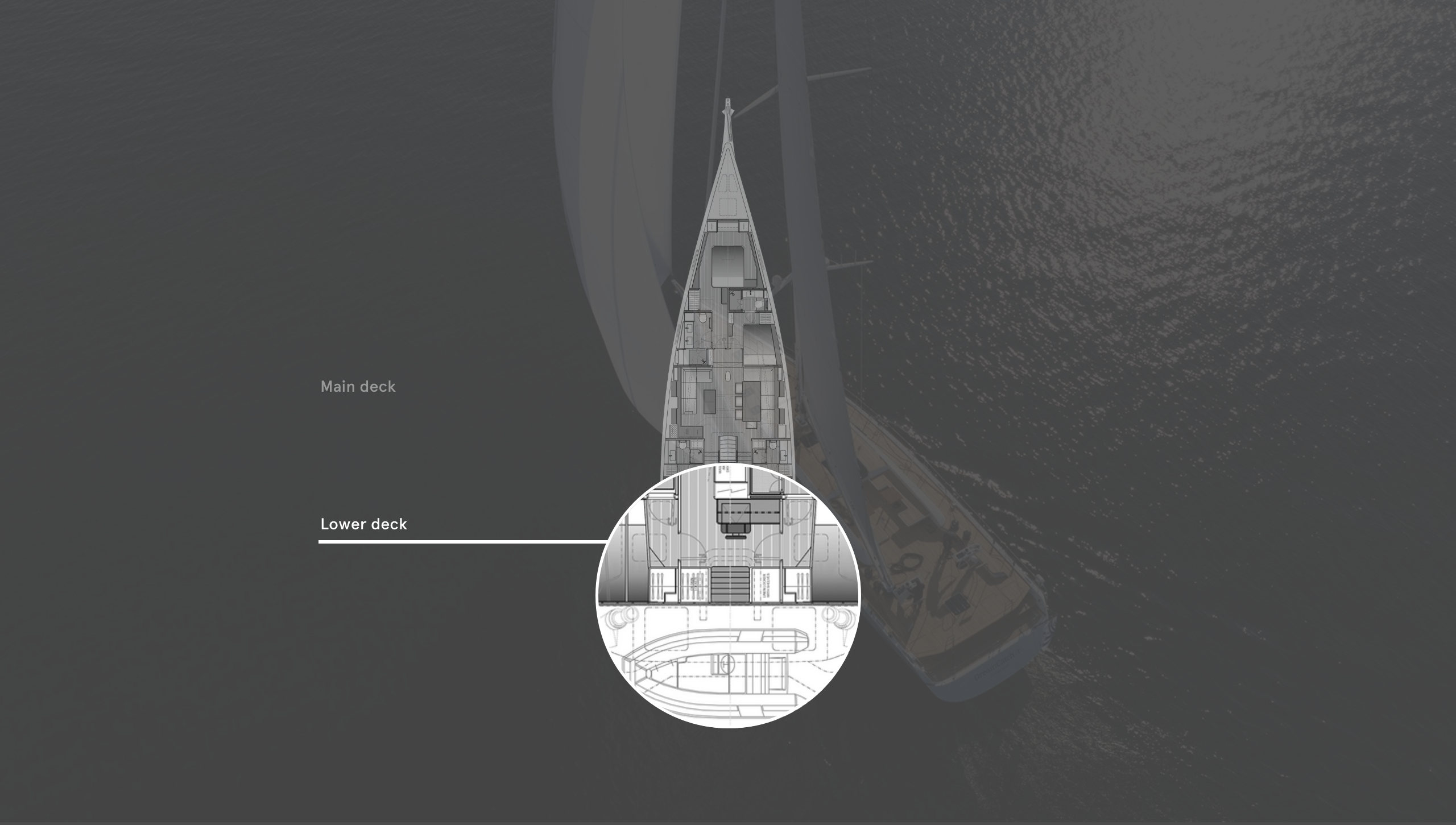

Crew quarters are accessed via a separate companion way aft
The beach platform adds an extra 10m2 of deck space
Making this cabin a lounge connected to the forward cabin creates a huge owner’s suite
The aft accommodation can be configured for three or four crew members
Stowing the tender athwartships in the garage allows for more interior space
LOA 28.27m | Gross tonnage |
LWL 24.87m | Electric motor |
Beam 6.79m | Generators |
Draught 4m | Rigging |
Sails | Sail area (upwind) |
Fuel capacity | Owners/guests 8 |
Freshwater capacity | Crew 4 |
Classification | Construction |
Tender 3.7m RIB | Naval architecture |
Exterior design | Builder/year |
Interior design | +39 055 240 382 |


